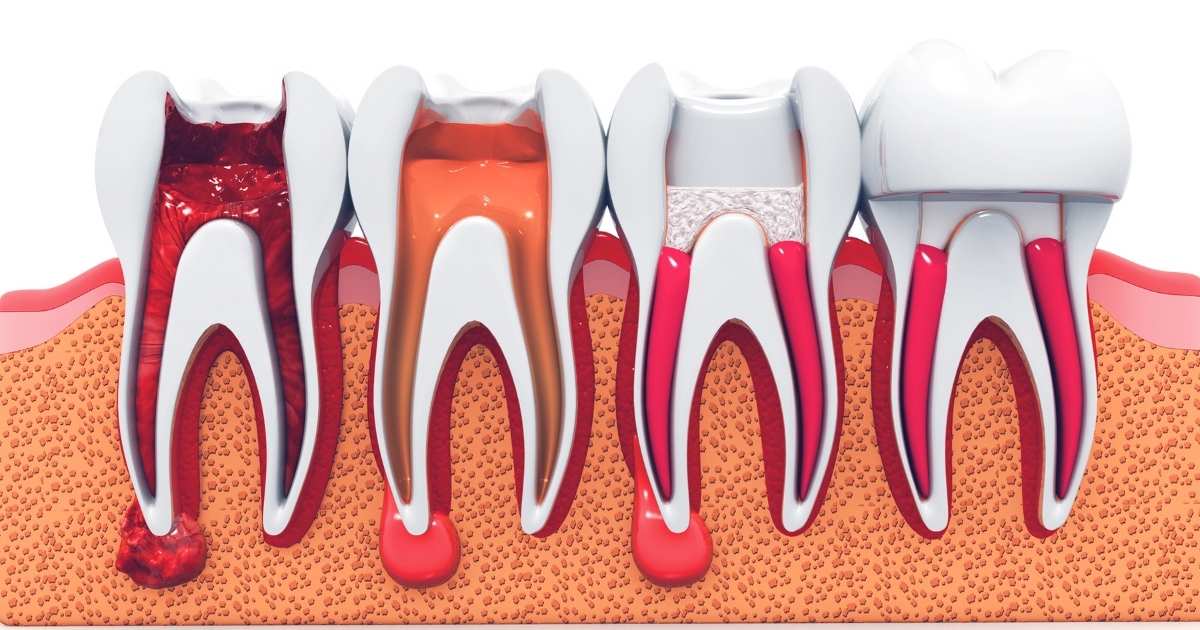A root canal helps save a tooth from extraction and restores its function. While the procedure itself removes infection and pain, the recovery phase requires proper care. Some discomfort, swelling, and sensitivity are common for a few days, but following the right aftercare steps can speed up healing.
A smooth recovery depends on good oral hygiene, dietary adjustments, and pain management. With the right approach, you can prevent complications and get back to your routine quickly. Here’s what you need to know about life after a root canal and how to heal faster.
What to Expect After a Root Canal?
After a root canal, it’s normal to experience some temporary effects, including:
- Mild to moderate discomfort, which improves within a few days
- Swelling or tenderness in the surrounding gum area
- Numbness for a few hours due to the anesthesia
- Sensitivity when chewing on the treated tooth
- A temporary filling, which may feel slightly different from your natural tooth
These symptoms usually subside as the tooth heals. However, taking proper care during this period helps prevent complications and speeds up recovery.
Tips for a Smooth Recovery After Root Canal
1. Manage Pain and Swelling
Discomfort is common after a root canal in South Side, but it should gradually decrease. You can manage pain and swelling by:
- Taking prescribed or over-the-counter pain relievers as directed
- Applying an ice pack on the cheek near the treated area for 10-15 minutes at a time
- Avoiding extremely hot or cold foods, which may trigger sensitivity
- Resting well, especially on the first day after treatment
Pain should start to fade within a couple of days. If it worsens or persists for more than a week, contact your dentist for further evaluation.
2. Eat Soft and Nutritious Foods
Choosing the right foods during recovery can make a big difference in comfort and healing. Stick to:
- Soft foods like mashed potatoes, yogurt, soup, eggs, and oatmeal
- Cooked vegetables instead of raw ones, which may require more chewing
- Smoothies and protein shakes for added nutrition without much effort
Avoid foods that could interfere with healing, such as:
- Hard or crunchy foods like nuts, chips, and raw carrots
- Sticky foods like caramel or chewing gum that could dislodge the temporary filling
- Extremely hot or cold drinks, as they may cause sensitivity
- Alcohol, which can delay healing and irritate the gums
Eating carefully protects the treated tooth and promotes faster healing.
3. Maintain Good Oral Hygiene
Keeping the mouth clean prevents infection and supports recovery. However, it’s important to be gentle while brushing and flossing. Follow these steps:
- Brush twice a day using a soft-bristled toothbrush
- Avoid direct pressure on the treated tooth while brushing
- Floss gently, being careful around the treated area
- Rinse with warm salt water to soothe the gums and keep the area clean
- Avoid alcohol-based mouthwashes, which can cause irritation
Maintaining proper hygiene ensures a healthy recovery and reduces the risk of reinfection.
4. Avoid Chewing on the Treated Tooth
After a root canal, the tooth is more fragile until it is permanently restored. To prevent damage:
- Chew on the opposite side of your mouth until healing is complete
- Avoid biting into hard foods like apples or crusty bread
- If you have a temporary filling, be extra cautious, as it may not be as strong as a permanent one
Your dentist may recommend placing a dental crown over the tooth to provide additional protection. If so, don’t delay the procedure, as it helps restore strength and function.
5. Watch for Signs of Complications
Most root canals heal without issues, but in some cases, problems can arise. Monitor your recovery and watch for these warning signs:
- Severe pain that does not improve after a few days
- Swelling that worsens instead of getting better
- A persistent bad taste or bad breath, which could indicate infection
- Fever or pus near the treated tooth
- A loose or broken temporary filling
If any of these symptoms occur, contact your dentist immediately. Prompt care can prevent further complications and ensure proper healing.
6. Get Plenty of Rest and Reduce Stress
Healing takes time, and resting well is an important part of the process. To support recovery:
- Avoid heavy lifting or intense exercise for at least 24 hours
- Keep your head slightly elevated while sleeping to reduce swelling
- Take time to relax and avoid stress, as it can slow down healing
A well-rested body recovers faster, helping you return to normal activities sooner.
7. Follow Up with Your Dentist
A follow-up appointment is essential to ensure the tooth is healing properly. Your dentist will check for any signs of infection and determine if further treatment is needed. If a permanent filling or crown is required, it should be placed as soon as possible to protect the tooth.
If you experience ongoing discomfort or have any concerns, don’t hesitate to schedule a visit.
How Long Does Recovery Take?
Recovery after a root canal varies from person to person, but most people feel better within a few days. However, it may take a couple of weeks for the area to fully heal.
Factors that can affect healing time include:
- The severity of the initial infection
- How well aftercare instructions are followed
- The placement of a crown or permanent filling
- Overall oral health and immune response
A root canal helps save your natural tooth, but proper aftercare is essential for smooth healing. Managing pain, eating the right foods, practicing good oral hygiene, and avoiding unnecessary strain on the treated tooth all contribute to a faster recovery.
If you experience any unusual symptoms, reach out to your dentist without delay. With the right care, you’ll soon be able to enjoy a pain-free, healthy smile once again.




